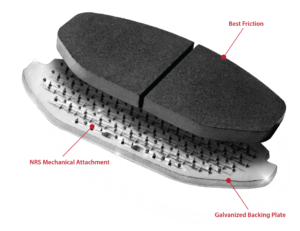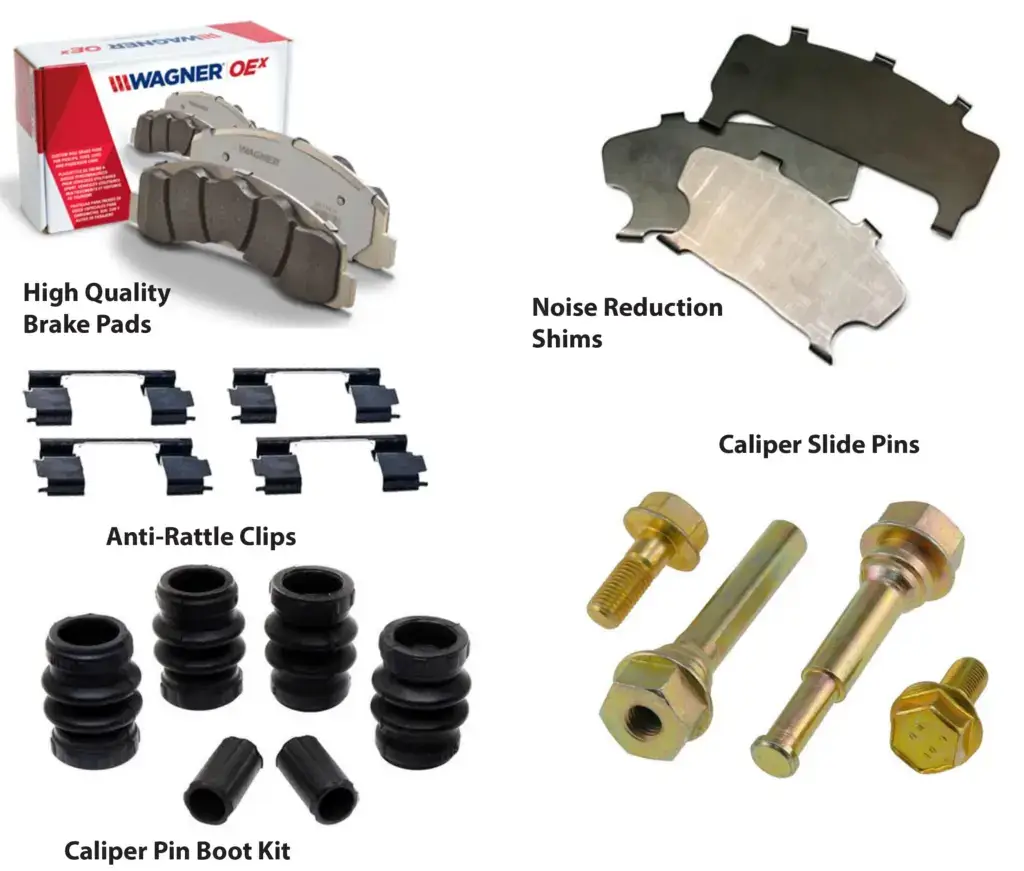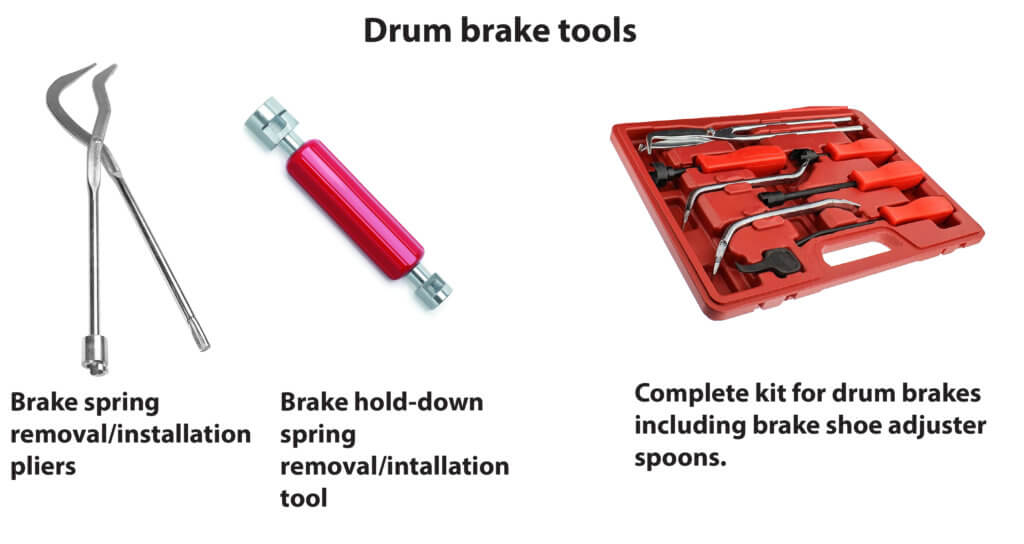Brake job parts list — What you need to do a brake job
Understand what parts and supplies you need to do a complete brake job
Whether you’re a seasoned mechanic or a DIY enthusiast, having the right tools and supplies is essential. Here’s a comprehensive brake job parts list, along with a list of tools and supplies you’ll need to do the job right the first time.
Brake Job Parts List
• OE or premium brake pads— A set of high-quality brake pads comes with a set of new anti-rattle clips and new noise-reduction shims. In some cases, depending on the year and model, the hardware kit may also include a set of drag-reduction springs.
• Caliper bolt boot kit—Many DIYers skip this, but they shouldn’t. The rubber boots that are supposed to prevent water from entering the caliper pin bores can deteriorate and allow water and road salt into the bore, which causes caliper slide pins to corrode and seize. Boot kits often include anti-rattle sleeves to replace the worn-out sleeves. To learn more about these sleeves, see this article.
• Brake rotors— Reusing old brake rotors is the #1 cause of brake noise and reduced braking. If you reuse your old brake rotors, you must first measure them to ensure they’re still within specifications. Next, you must remove the rust in the cooling vanes. Reusing rotors with rusted cooling vanes will reduce the life of the new brake pads. Lastly, remove the rotor from the hub and all rust on the wheel hub and any rust in the rotor hat area. Rust accumulation on either component will cause lateral runout, disc thickness variation, and shaking when braking.
• High temperature synthetic brake grease— Use brake grease to lubricate the caliper slide pins, sleeves and boots. Use synthetic brake grease on the backside of the brake pad backing plate noise reduction shims in the areas where they contact the caliper piston and the caliper fingers on the outboard side.
My recommendation for the best brake pads
Brake pads come in three quality levels: economy, OEM, and professional premium grade. You may think you’re saving money by buying economy-grade brake pads. And if you’re driving an old car with a limited life, that might make sense on the surface. But once you dig deeper, you’ll see that buying economy pads almost always costs more in the long run.
My go-to brake pad is the Wagner OEX pad set. Here’s why.
• Wagner OEX brake pads are built on a galvanized steel backing plate— Cheaper pads are built on black steel plates, which are then painted. They eventually rust, and it is that rust that breaks up the friction material, causing early failure. Galvanized steel backing plates won’t rust and will last until the pads are completely worn out
• Wagner OEX backing plates use a mechanical friction
attachment system— Cheaper brake pads use glue to attach the friction material to the backing plate. A single high speed brake application can degrade the glue and cause early pad failure.
• Multiple cooling channels— OEX pads contain multiple cooling channels. That’s not a feature you can accomplish when the friction material is glued to the backing plate, because the channels will break off. The channels prevent brake fake and reduce brake pad temperature
Avoid Economy brake pads
Economy pads are made with much lower-quality materials. The steel backing plates are made from low-grade steel.
When you buy an economy pad with a thinner, low-grade steel backing plate, the plate can flex and break off the friction material. Low-grade steel backing plates also rust faster, so the backing plate “ears” tend to stick in the anti-rattle clips, causing the pad to bind and not release. A rusting backing plate will also debond from the friction material, causing it to crack and fall off.
Next, economy pads often don’t come with hardware, so you’ll have to buy that separately. At that point, you might as well have purchased a higher-quality brake pad set
At the very least, buy OEM-grade brake pads
Original equipment manufacturer (OEM) grade pads are designed to duplicate the quality level of the brake pads installed at the factory. Depending on the brand, they may include anti-rattle clips and shims. These pads will give a good service life equal to the factory pads
What type of friction material should you buy
There are three types of brake pad friction material: Non-asbestos Organic (NAO), Semi-Metallic, and Ceramic. It’s best to use the same type of brake pad material that came on the car from the factory. If you change from semi-metallic to ceramic, you’ll lose braking performance. If you change from ceramic to semi-metallic, you’ll encounter more noise and brake dust.
Why I don’t recommend buying store-brand brake pads or hardware
No auto parts store makes their brake pads. They’re made by other companies and specifically designed to make more money for the auto parts store. You’ll often pay more for those brake pads and get lower-quality pads. Sure, they offer a lifetime guarantee, but they’ll fail faster, so you’ll have to perform repeat brake jobs. If you like replacing your brakes more often and don’t mind overpaying for lower-quality brake pads, then buy store-branded parts.
What you need to know about buying brake rotors
Just like brake friction materials, rotors also come in several grades. Economy and service grade rotors are built for price-conscious retail customers and shops that sell economy brake jobs. Economy and service-grade rotors aren’t built to the same standards as OEM rotors. First, they’re made with less metal. The photos below illustrate the point. These two rotors are for the same vehicle. One is an economy rotor, and the other is a professional-grade rotor built to OEM standards. Notice the difference in weight.
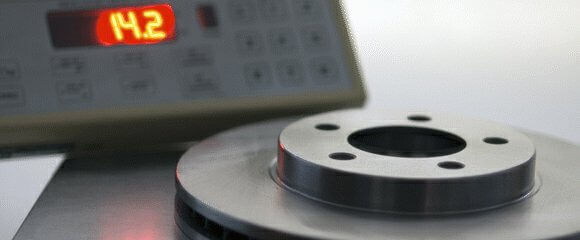
Economy Rotor on scale
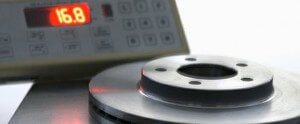
Pro-quality brake rotor
In these next photos, you’ll see the difference in the thickness of the “swept area” portion of the brake rotor. The economy rotor is thinner, so it can’t dissipate heat as well as the premium rotor.
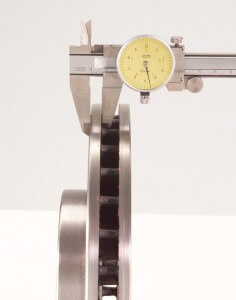
Economy brake rotor. Notice the thinner friction surface
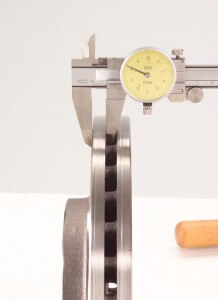
Professional grade rotor. Notice the thicker friction surface
Next, economy rotors don’t have the same number of cooling fins as the car maker or incorporate a far less effective cooling fin design. As car makers reduce the weight of brake rotors, they must compensate by increasing the cooling effectiveness of the fins. So, it’s common to see curved and multi-segment cooling fins on OEM rotors. However, since many of those designs are patented and more expensive, economy rotor manufacturers often skip the OEM design and cast in traditional straight fins, dramatically reducing the rotor’s ability to cool.
Finally, economy rotors contain far fewer carbon chains in the raw materials, so they wear faster, create more noise, generate more dust, and wear out friction materials faster.
Brake job tool list
For disc brakes you’ll need the following tools
• Socket set and rachet— In addition to 6-pint standard and deep sockets, you may also need hex or Torx bit sockets.
• Caliper piston compression tool— See the styles shown below. For rear disc brakes with an integral parking brakes mechanism, you’ll need a wind-back tool set.
• Wheel hub cleaning abrasives— These special abrasives make it much easier to clean the rust off of the wheel hub
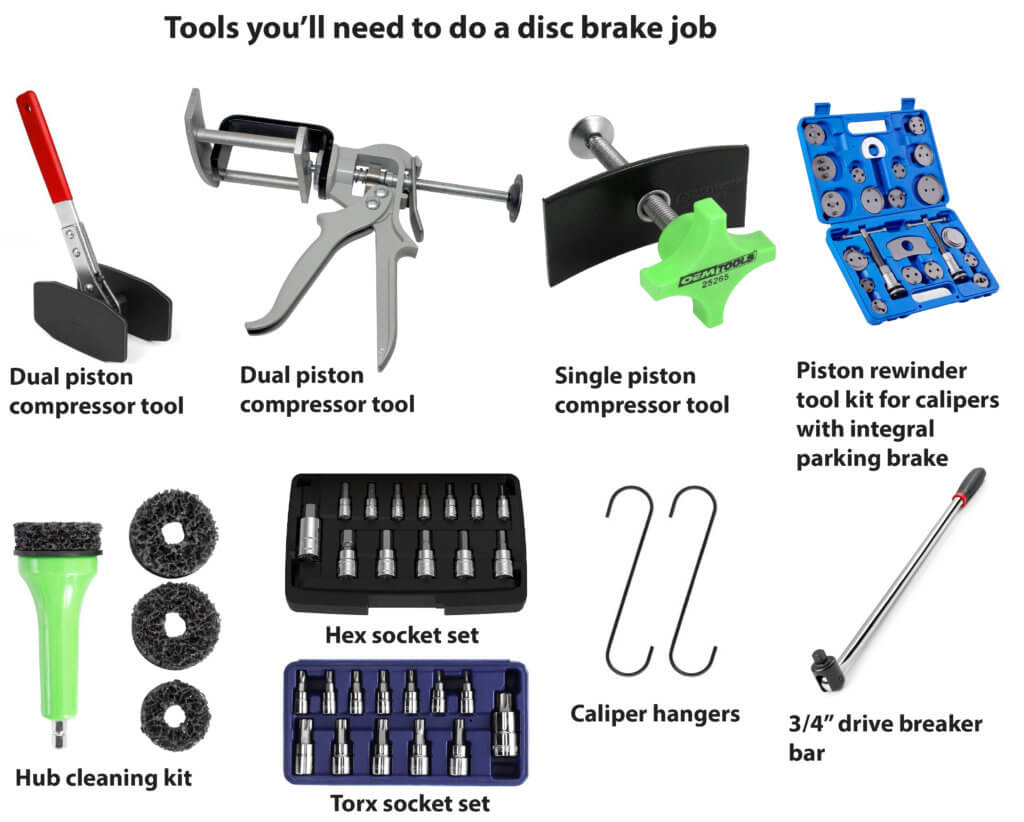
Tools for drum brakes
• Brake spring removal/installation pliers— Use the jaws to expand and remove the springs. Use the opposite end to stretch the new springs back into place.
• Brake shoe hold-down spring removal too— It’s almost impossible to remove or install the hold-down springs without this tool.
• Drum brake adjusting spoons— You can sometimes adjust the brake shoes with a screwdriver, but a set of adjusting spoons makes the job much easier.
See these posts for in-depth information on which brake grease to use and where to apply it
Hub cleaning tools See this post for a list of hub cleaning tools
©, 2015 Rick Muscoplat
Posted on by Rick Muscoplat

